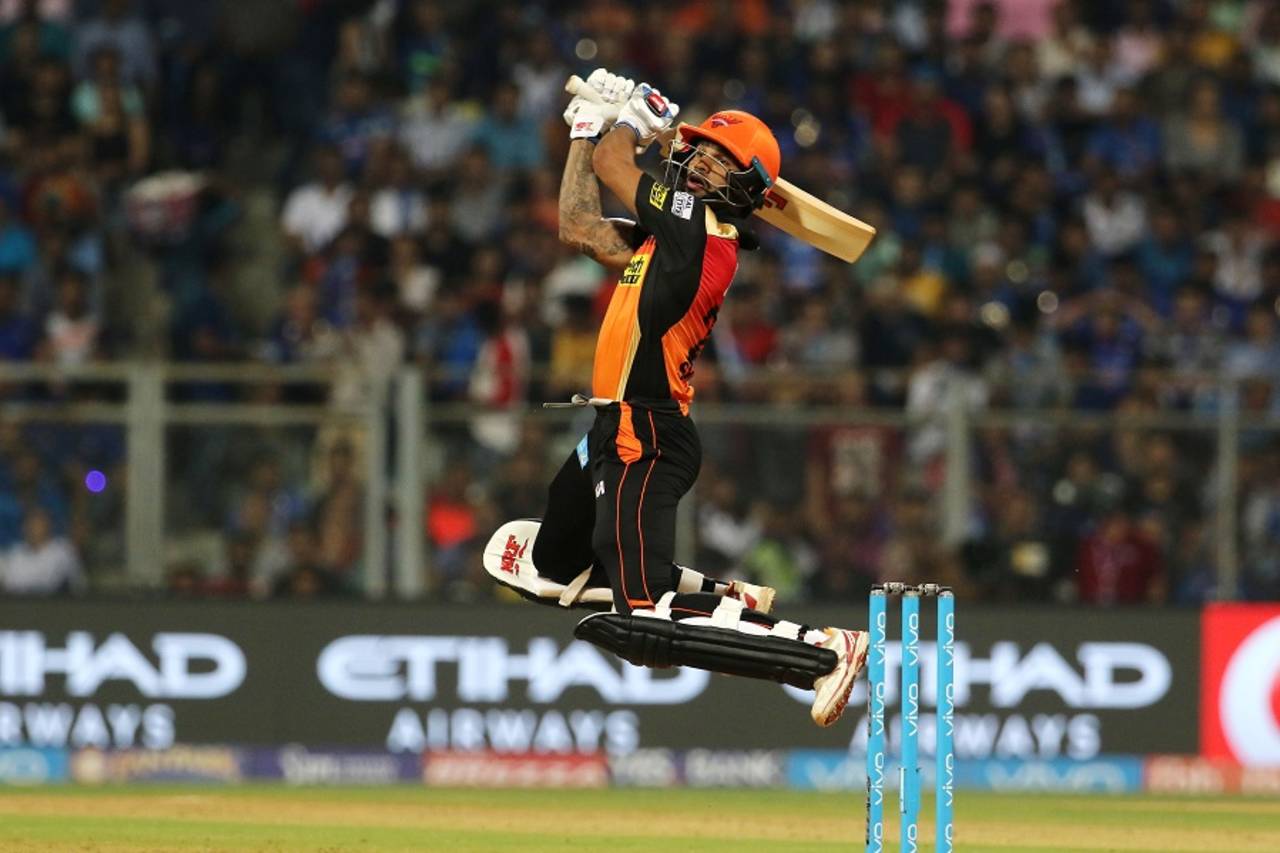How Harbhajan and dew hindered Sunrisers
Aakash Chopra analyses some of the major talking points from the match between Mumbai Indians and Sunrisers Hyderabad

Shikhar Dhawan managed only seven runs in the Powerplay at a strike rate of 46.66 - his second lowest in the first six overs in the IPL (min 10 balls) • BCCI
Since Sunrisers Hyderabad had two left-hand batsmen at the top, Rohit Sharma gave the new ball to Harbhajan Singh with a slip and a short cover in place. The two fielders in the deep were long-off and deep midwicket, which suggested a stump-to-stump line. The first two balls of the third over provided Warner some width, and he dispatched both to the boundary. The extra bounce on the red-soil pitch at Wankhede allowed him to go aerial through the offside off the back foot. The next four balls finished within the stumps and ended up as dots.
In the past Mumbai Indians have been quick to make changes to their playing XI but. But under their new coach Mahela Jayawardene, they seem to be more patient. Fast bowler Mitchell McClenaghan has had a very ordinary start to this season but, despite having options in Mitchell Johnson and Tim Southee, Mumbai stuck with him. Not that his lack of form was lost on Mumbai, for he wasn't brought in the first six overs, and his spell was done by the 15th over. The strategy of playing him and then giving him the easier middle overs shows how much Mumbai value him.
While Mumbai rarely offered width and bowled tight lines, a plausible reason for Sunrisers' slow approach could be the lack of depth in the batting line-up. In Henriques' absence, their middle order read Deepak Hooda, Yuvraj Singh, Ben Cutting, Naman Ojha, and Vijay Shankar. Such a line-up inspires little confidence. But such reasoning should not take the attention away from Dhawan's T20 numbers. He only has a strike rate of 115 in the Powerplay and 121 overall in the IPL. The presence of an explosive batsman in Warner makes for an ideal foil, but Warner himself was slow off the blocks today.
There's an ongoing debate on where Rohit should bat for Mumbai. Most people believe that since he is successful as an opener in limited-overs cricket for India, he should be right there at the top, in place of Jos Buttler, for his franchise as well.
Twice in three games, Rohit has been dismissed by a legspinner. In Pune, it was Imran Tahir's front-of-the-hand flipper that got him. Then Rashid Khan deceived him with a googly. Quality legspin, it appears, can trouble Rohit at the start of his innings.
Firstly Sunrisers did not have enough runs to feel comfortable and then the dew just made their bowlers' life even more difficult. In the first innings a few wickets fell to slower deliveries as the ball was dry and was gripping the surface, but the slower ones in the second innings just skidded through. While the outfield was swept with rugs during the strategic time-outs, the pitch was left dew-slicked. Slowly but surely the dew made the pitch greasy, which in turn rendered changes of pace useless. In addition, even attempting a yorker became difficult given the ball was hard to grip. Mustafizur becomes half the bowler if you take away the slower deliveries and yorkers, and this was evident in his bowling analysis: 2.4-0-34-0.
Aakash Chopra is the author of three books, the latest of which is The Insider: Decoding the craft of cricket. @cricketaakash